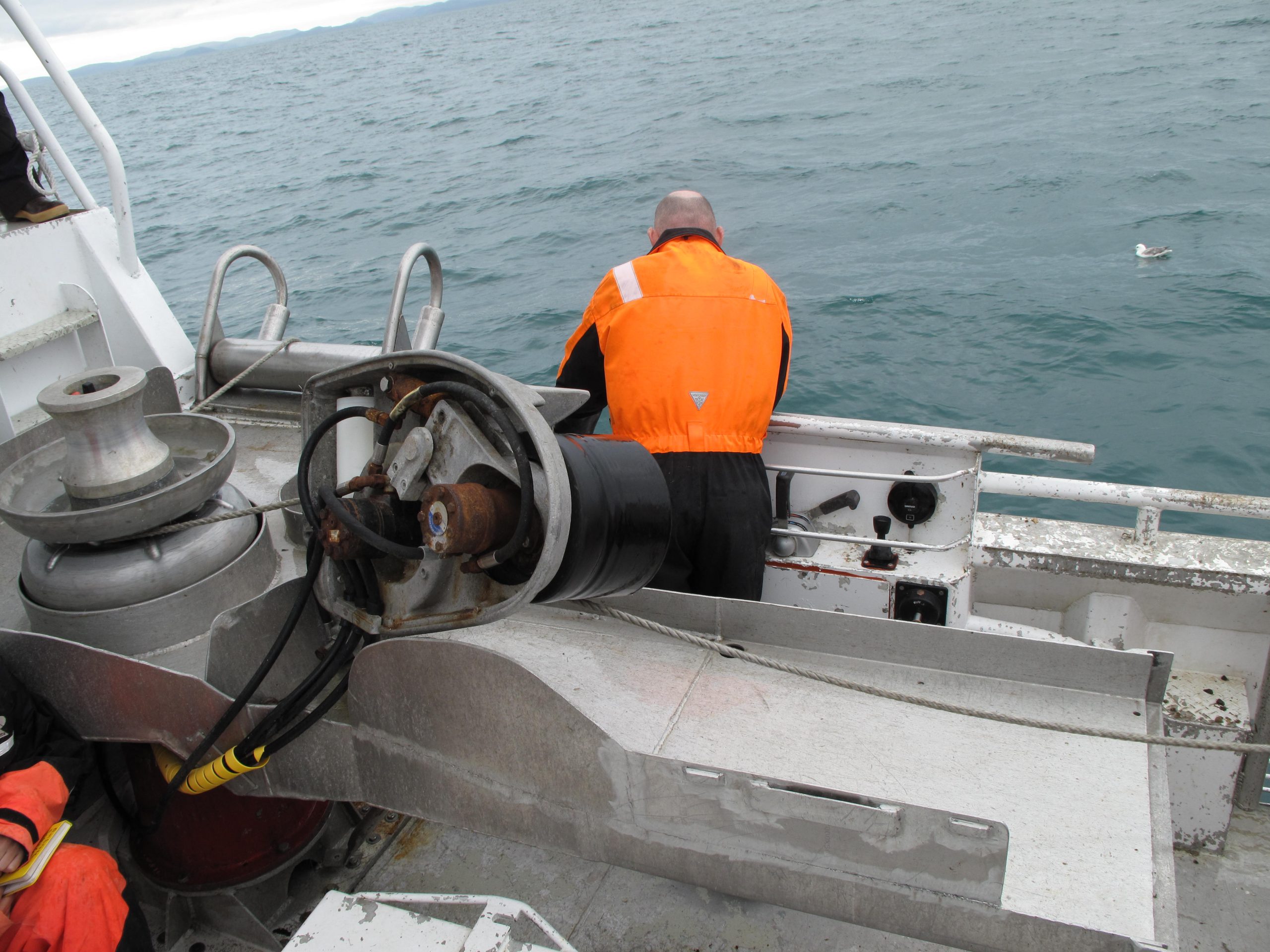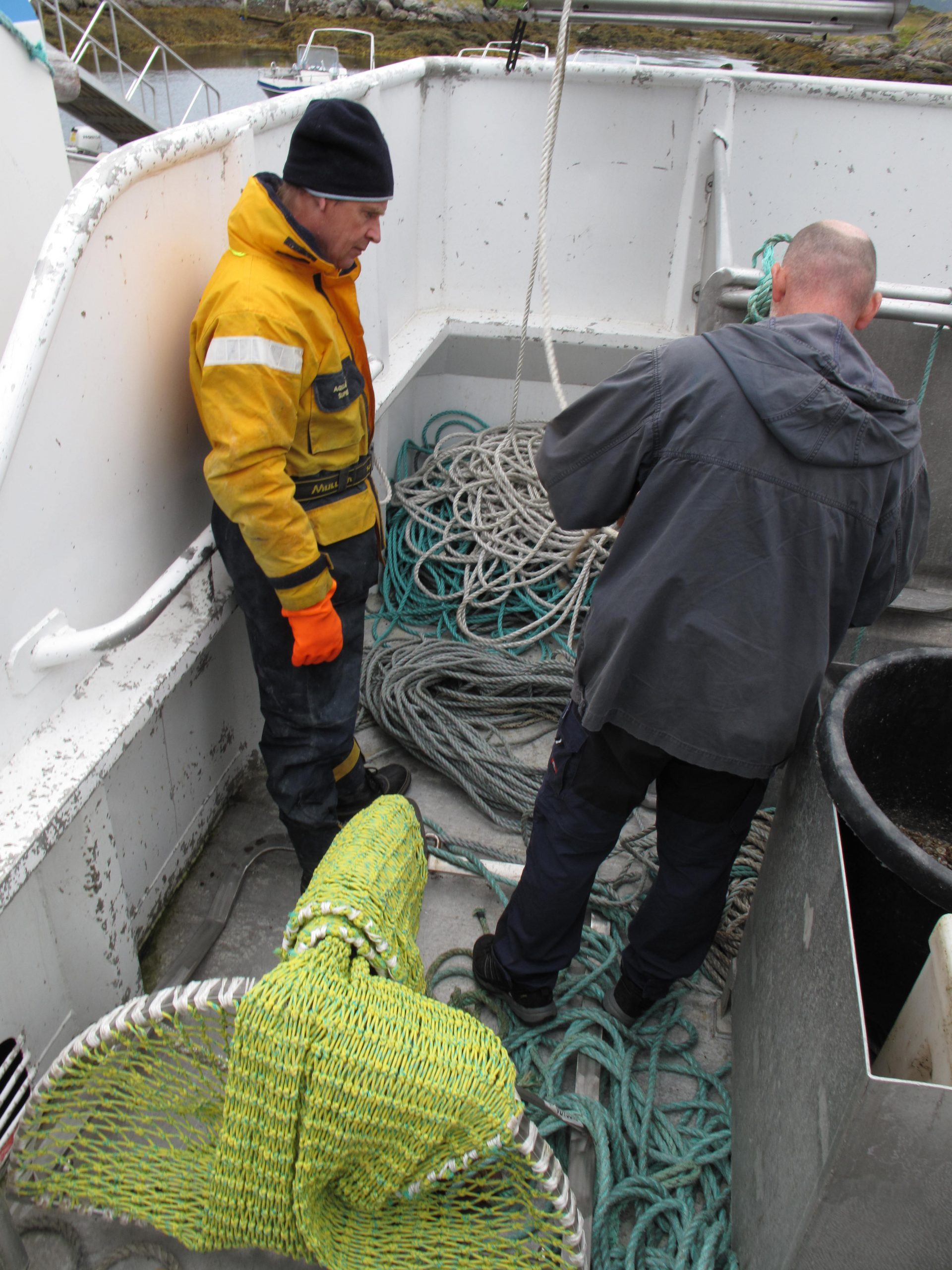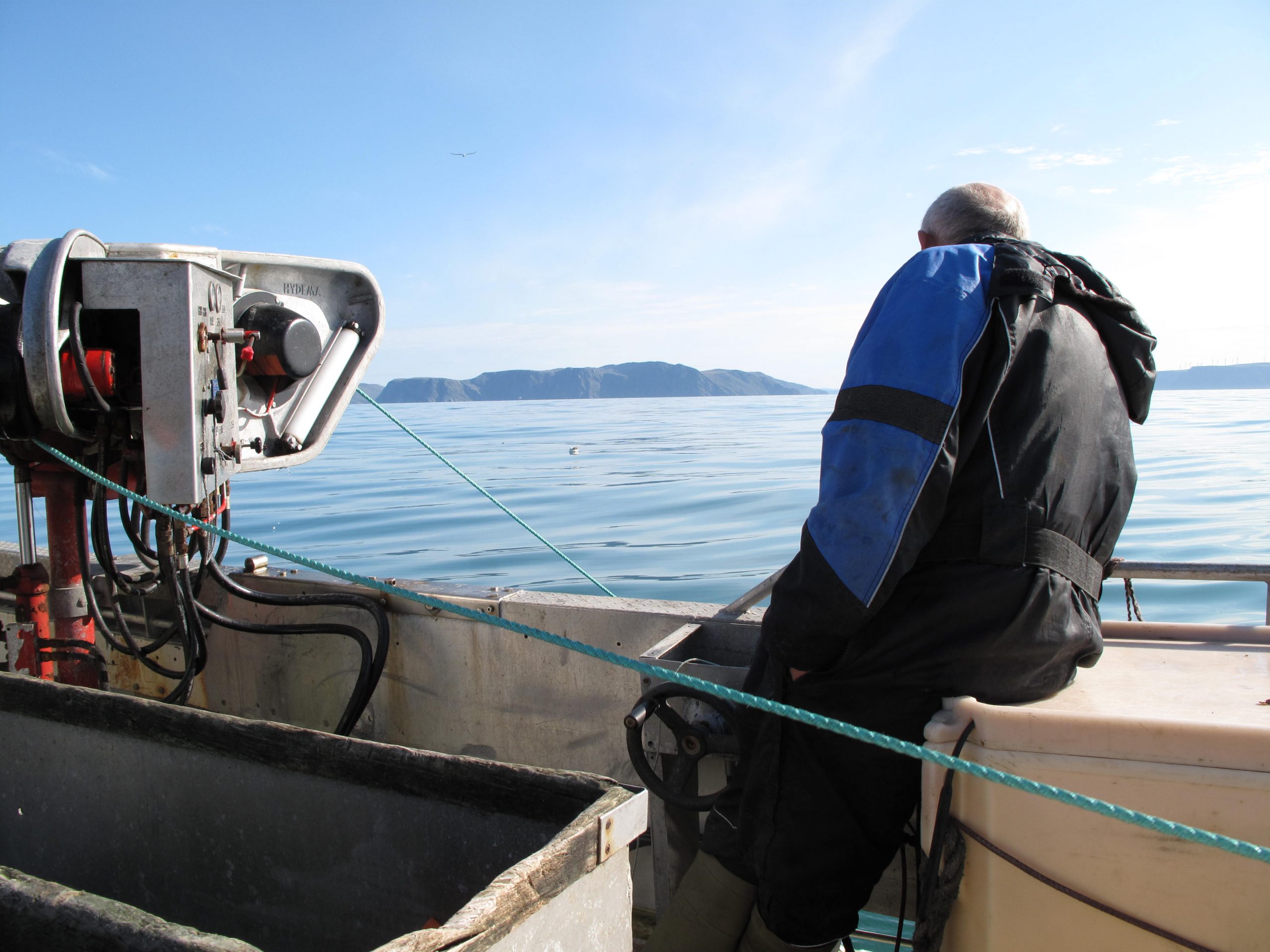Yesterday and part of today were dedicated to deepwater dredging. Erlend, Maddie, and crew set out for the small shelf break northeast of Ingøy. Thorleif, Al, and crew headed for deeper areas east of Ingøy we dubbed “the bowl.”
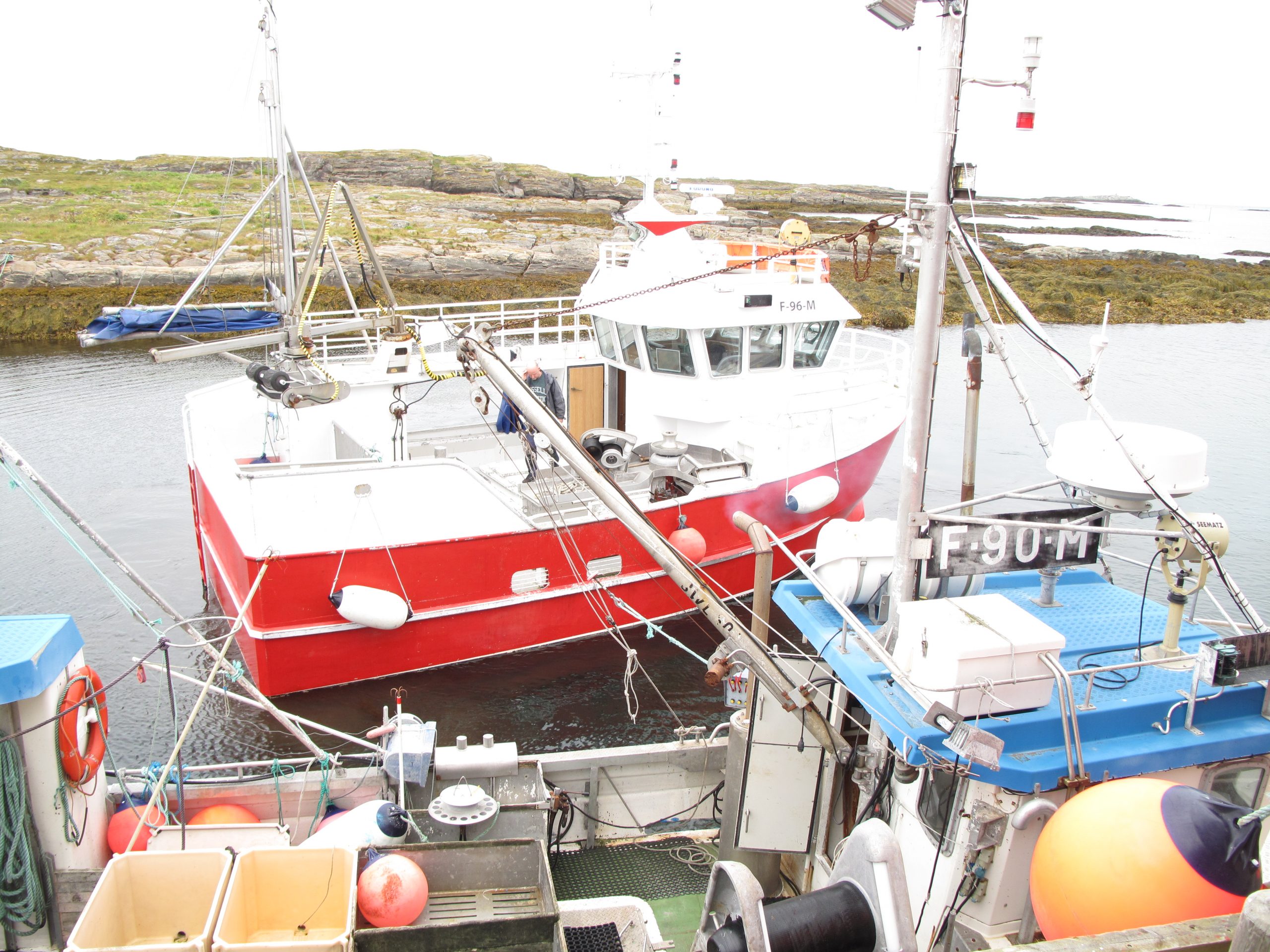
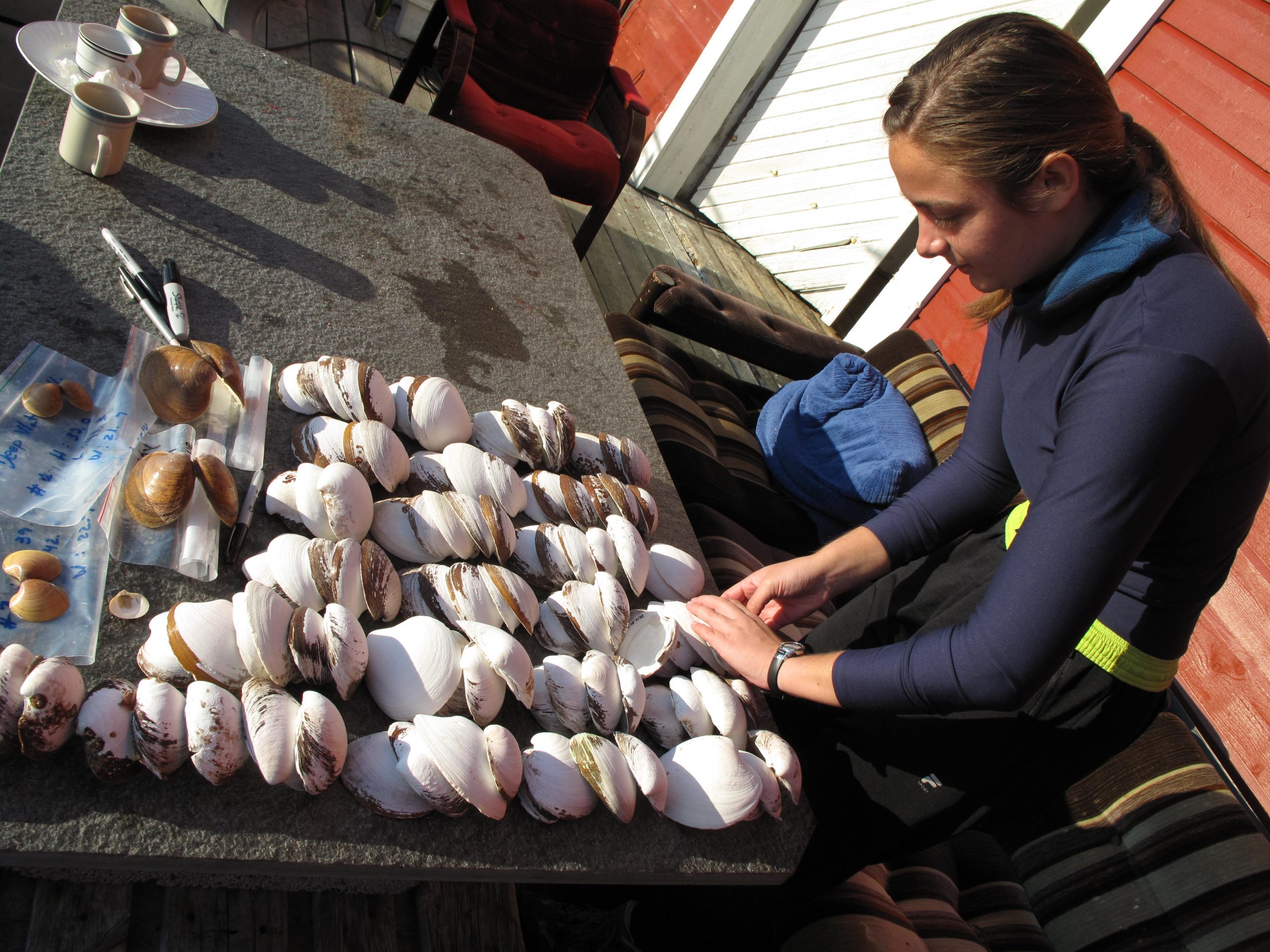
On the way to the shelf break sites, Erlend called the coast guard to inquire about fishing activities in our target area at 90-130 fathoms. Unfortunately, crab traps were set in the exact spots we had identified as potential habitat for Arctica islandica. We headed west a bit to avoid the traps, but a couple of dredge hauls came up with small to medium stones – not the right habitat. We then tried a couple of spots above the shelf break and closer with no luck. After 7 hours and no luck, we headed back to base camp.
Thorleif and crew had slightly better luck dredging closer to Ingøy. A few dredge pulls at 90 fathoms brought up several dead shells and two small live Arctica islandica. Dredging became more difficult throughout the day due to interference from tidal currents at the sea bottom. We revisited the location this morning and were able to bring in more dead shells but no live ones. Interestingly, the live shells we collected appear to be about 10 or more years of age yet they are quite small compared to the shallow water 10 year-olds. This is because less food makes it to the seafloor in deeper waters, meaning slower growth for deepwater clams.
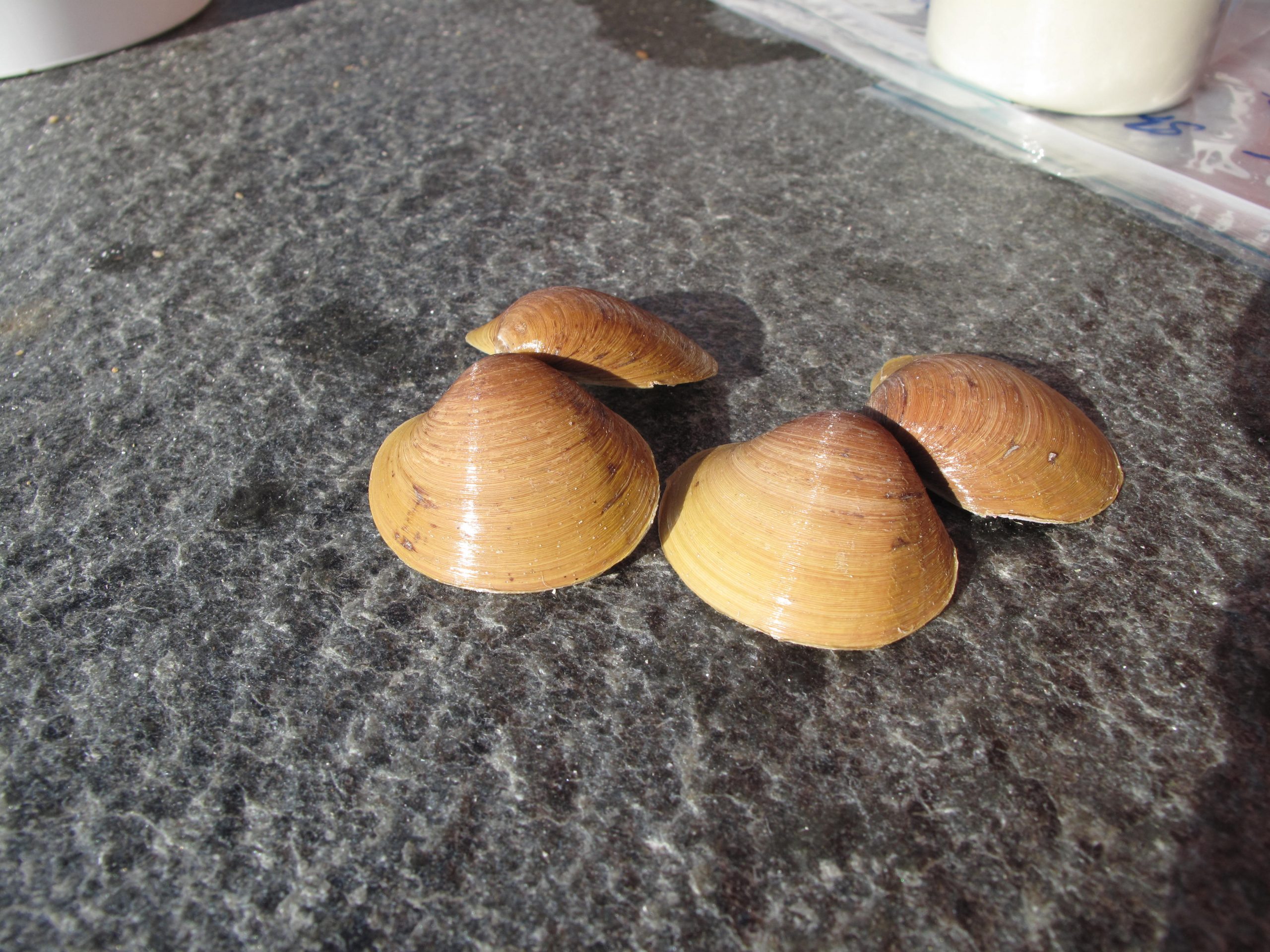
While there was some disappointment that we didn’t bring in a larger number of live clams from deepwater, it is a significant step forward to have only collected two. We are now confident they are there and simply need to narrow in on the population. It requires some luck, and with the knowledge we have gained, we know we’ll get there. Some dredge modifications and slightly different sampling strategy will improve our chances next year. Also, Thorleif is interested in keying in on the population as well and will continue looking for them after we leave.
